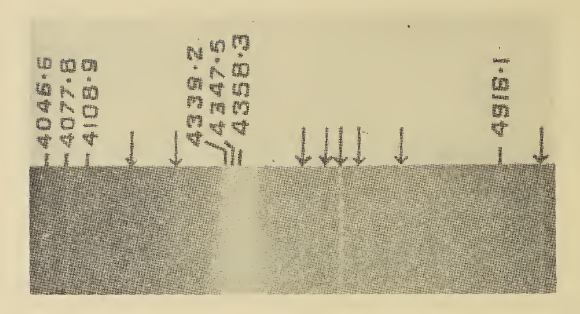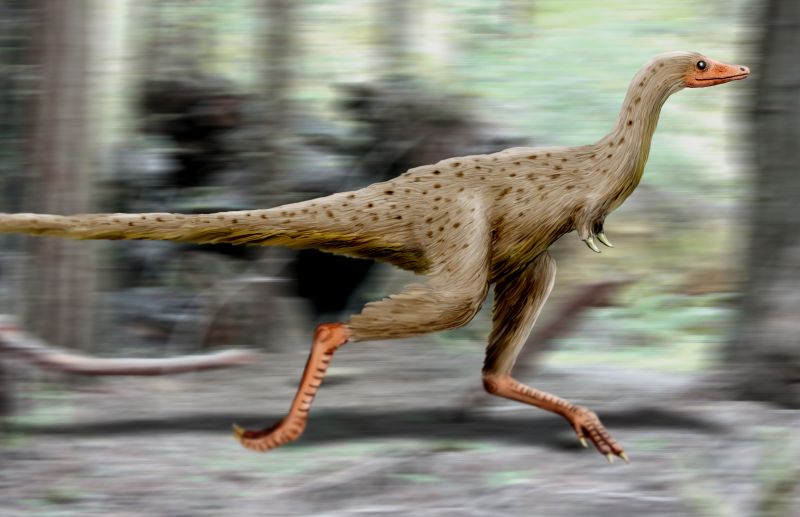|
Alvarezsaurs
Alvarezsauroidea (from the Argentine historian, writer and physician Gregorio Álvarez) is a group of small maniraptoran dinosaurs. The group was first formally proposed by Choiniere and colleagues in 2010, to contain the family Alvarezsauridae and non-alvarezsaurid alvarezsauroids, such as ''Haplocheirus'',Choiniere, J.N., Xu, X., Clark, J.M., Forster, C.A., Guo, Y. and Han, F. (2010). "A basal alvarezsauroid theropod from the early Late Jurassic of Xinjiang, China." ''Science'', 327: 571-574. which is the basalmost of the Alvarezsauroidea (from the Late Jurassic, Asia). The discovery of ''Haplocheirus'' extended the stratigraphic evidence for the group Alvarezsauroidea about 63 million years further in the past. The division of Alvarezsauroidea into the Alvarezsauridae and the non-alvarezsaurid alvarezsauroids is based on differences in their morphology, especially in their hand morphology. Description Fossils of alvarezsauroids were described since the 1990s, with many alvar ... [...More Info...] [...Related Items...] OR: [Wikipedia] [Google] [Baidu] |
Alvarezsauridae
Alvarezsauridae is a family of small, long-legged dinosaurs. Although originally thought to represent the earliest known flightless birds, they are now thought to be an early diverging branch of maniraptoran theropods. Alvarezsaurids were highly specialized. They had tiny but stout forelimbs, with compact, bird-like hands. Their skeletons suggest that they had massive breast and arm muscles, possibly adapted for digging or tearing. They had long, tube-shaped snouts filled with tiny teeth. They have been interpreted as myrmecophagous, adapted to prey on colonial insects such as termites, with the short arms acting as effective digging instruments to break into nests. '' Alvarezsaurus'', the type genus of the family, was named for the historian Gregorio Álvarez. History of study Bonaparte (1991) described the first alvarezsaurid, '' Alvarezsaurus calvoi'', from an incomplete skeleton found in Patagonia, Argentina. Bonaparte also named a family, Alvarezsauridae, to contain it. H ... [...More Info...] [...Related Items...] OR: [Wikipedia] [Google] [Baidu] |
Late Jurassic
The Late Jurassic is the third Epoch (geology), epoch of the Jurassic Period, and it spans the geologic time scale, geologic time from 161.5 ± 1.0 to 143.1 ± 0.8 million years ago (Ma), which is preserved in Upper Jurassic stratum, strata.Owen 1987. In European lithostratigraphy, the name "Malm" indicates rocks of Late Jurassic age. In the past, ''Malm'' was also used to indicate the unit of geological time, but this usage is now discouraged to make a clear distinction between lithostratigraphic and geochronologic/chronostratigraphic units. Subdivisions The Late Jurassic is divided into three ages, which correspond with the three (faunal) stages of Upper Jurassic rock: Paleogeography During the Late Jurassic Epoch, Pangaea broke up into two supercontinents, Laurasia to the north, and Gondwana to the south. The result of this break-up was the emergence of the Atlantic Ocean, which initially was relatively narrow. Life forms This epoch is well known for many famous types of d ... [...More Info...] [...Related Items...] OR: [Wikipedia] [Google] [Baidu] |
Dinosaur
Dinosaurs are a diverse group of reptiles of the clade Dinosauria. They first appeared during the Triassic Geological period, period, between 243 and 233.23 million years ago (mya), although the exact origin and timing of the #Evolutionary history, evolution of dinosaurs is a subject of active research. They became the dominant terrestrial vertebrates after the Triassic–Jurassic extinction event 201.3 mya and their dominance continued throughout the Jurassic and Cretaceous periods. The fossil record shows that birds are feathered dinosaurs, Evolution of birds, having evolved from earlier Theropoda, theropods during the Late Jurassic epoch, and are the only dinosaur lineage known to have survived the Cretaceous–Paleogene extinction event approximately 66 mya. Dinosaurs can therefore be divided into avian dinosaurs—birds—and the extinct non-avian dinosaurs, which are all dinosaurs other than birds. Dinosaurs are varied from taxonomy (biology), taxonomic, ... [...More Info...] [...Related Items...] OR: [Wikipedia] [Google] [Baidu] |
Raman Spectroscopy
Raman spectroscopy () (named after physicist C. V. Raman) is a Spectroscopy, spectroscopic technique typically used to determine vibrational modes of molecules, although rotational and other low-frequency modes of systems may also be observed. Raman spectroscopy is commonly used in chemistry to provide a structural fingerprint by which molecules can be identified. Raman spectroscopy relies upon inelastic scattering of photons, known as Raman scattering. A source of monochromatic light, usually from a laser in the visible spectrum, visible, near infrared, or ultraviolet, near ultraviolet range is used, although X-ray Raman scattering, X-rays can also be used. The laser light interacts with molecular vibrations, phonons or other excitations in the system, resulting in the energy of the laser photons being shifted up or down. The shift in energy gives information about the vibrational modes in the system. Time-resolved spectroscopy and infrared spectroscopy typically yields similar y ... [...More Info...] [...Related Items...] OR: [Wikipedia] [Google] [Baidu] |
Scanning Electron Microscopy
A scanning electron microscope (SEM) is a type of electron microscope that produces images of a sample by scanning the surface with a focused beam of electrons. The electrons interact with atoms in the sample, producing various signals that contain information about the surface topography and composition. The electron beam is scanned in a raster scan pattern, and the position of the beam is combined with the Intensity (physics), intensity of the detected signal to produce an image. In the most common SEM mode, secondary electrons emitted by atoms excited by the electron beam are detected using a secondary electron detector (Everhart–Thornley detector). The number of secondary electrons that can be detected, and thus the signal intensity, depends, among other things, on specimen topography. Some SEMs can achieve resolutions better than 1 Nanometre, nanometer. Specimens are observed in high vacuum in a Convention (norm), conventional SEM, or in low vacuum or wet conditions in ... [...More Info...] [...Related Items...] OR: [Wikipedia] [Google] [Baidu] |
Maxilla
In vertebrates, the maxilla (: maxillae ) is the upper fixed (not fixed in Neopterygii) bone of the jaw formed from the fusion of two maxillary bones. In humans, the upper jaw includes the hard palate in the front of the mouth. The two maxillary bones are fused at the intermaxillary suture, forming the anterior nasal spine. This is similar to the mandible (lower jaw), which is also a fusion of two mandibular bones at the mandibular symphysis. The mandible is the movable part of the jaw. Anatomy Structure The maxilla is a paired bone - the two maxillae unite with each other at the intermaxillary suture. The maxilla consists of: * The body of the maxilla: pyramid-shaped; has an orbital, a nasal, an infratemporal, and a facial surface; contains the maxillary sinus. * Four processes: ** the zygomatic process ** the frontal process ** the alveolar process ** the palatine process It has three surfaces: * the anterior, posterior, medial Features of the maxilla include: * t ... [...More Info...] [...Related Items...] OR: [Wikipedia] [Google] [Baidu] |
Carnivory
A carnivore , or meat-eater (Latin, ''caro'', genitive ''carnis'', meaning meat or "flesh" and ''vorare'' meaning "to devour"), is an animal or plant whose nutrition and energy requirements are met by consumption of animal tissues (mainly muscle, fat and other soft tissues) as food, whether through predation or scavenging. Nomenclature Mammal order The technical term for mammals in the order Carnivora is ''carnivoran'', and they are so-named because most member species in the group have a carnivorous diet, but the similarity of the name of the order and the name of the diet causes confusion. Many but not all carnivorans are meat eaters; a few, such as the large and small cats (Felidae) are ''obligate'' carnivores (see below). Other classes of carnivore are highly variable. The ursids (bears), for example: while the Arctic polar bear eats meat almost exclusively (more than 90% of its diet is meat), almost all other bear species are omnivorous, and one species, the gian ... [...More Info...] [...Related Items...] OR: [Wikipedia] [Google] [Baidu] |
Linhenykus
''Linhenykus'' is an extinct genus of alvarezsaurid theropod dinosaur from the Late Cretaceous of Inner Mongolia, China. It is the most basal known member of the Parvicursorinae. The genus gets its name from Linhe, a city near the site where the fossil was first found and Greek ''nykus'', "claw". The specific name is derived from Greek ''monos'', "single", and ''daktylos'', "finger", a reference to the fact that it is the only known non-avian dinosaur to have had but a single digit. Description ''Linhenykus'' was a small dinosaur, measuring long and weighing . Its femur length is . Alvarezsauroids are known for their short forelimbs, each with a single greatly enlarged second digit. Although alvarezsaurids were once thought to have only a single digit on each forelimb, more recent evidence has shown that most species have reduced third and fourth digits. ''Linhenykus'' is the first known alvarezsaurid to have only a single, second digit. Although a reduced third metacarpal ... [...More Info...] [...Related Items...] OR: [Wikipedia] [Google] [Baidu] |
Bannykus Holotype Showing The Yellowish Conglomerate Enclosed By The Partial Gastralia Ribcage
''Bannykus'' is an alvarezsaur from the Early Cretaceous of the Bayin-Gobi Formation of Inner Mongolia, China. It includes one species, ''Bannykus wulatensis''. Discovery The holotype of ''Bannykus wulatensis'' is IVPP V25026, a partially-articulated incomplete skeleton of an 8 year old subadult. The holotype comes from the Bayin-Gobi Formation in Chaoge, Wulatehouqi, Inner Mongolia, China. It was discovered in 2009 and in 2012, its remains were displayed in Japan under the unofficial name "Wulatesaurus". It was given the binomial name ''Bannykus wulatensis'' in 2018; its generic name comes from the Mandarin word ''Ban'' ( zh, c=半), meaning half, and the Greek word , meaning claw. This refers to the transitional characteristics seen in this theropod. The specific name refers to Wulatehouqi (Wulate Rear Banner), the county that the holotype was found in. Description ''Bannykus'' is large for an alvarezsaurian theropod, with an estimated length of and body mass of approxi ... [...More Info...] [...Related Items...] OR: [Wikipedia] [Google] [Baidu] |
Theropod
Theropoda (; from ancient Greek , (''therion'') "wild beast"; , (''pous, podos'') "foot"">wiktionary:ποδός"> (''pous, podos'') "foot" is one of the three major groups (clades) of dinosaurs, alongside Ornithischia and Sauropodomorpha. Theropods, both extant and extinct, are characterized by hollow bones and three toes and claws on each limb. They are generally classed as a group of saurischian dinosaurs, placing them closer to sauropodomorphs than to ornithischians. They were ancestrally carnivorous, although a number of theropod groups evolved to become herbivores and omnivores. Members of the subgroup Coelurosauria and possibly some other or all theropods were covered in feathers. In the Jurassic, birds evolved from small specialized coelurosaurian theropods, and are currently represented by about 11,000 living species, making theropods the only group of dinosaurs alive today. Theropods first appeared during the Carnian age of the late Triassic period ... [...More Info...] [...Related Items...] OR: [Wikipedia] [Google] [Baidu] |
Haplocheirus NT
''Haplocheirus'' (, meaning "simple hand") is an extinct genus of theropod dinosaur from the Middle Jurassic Shishugou Formation of Xinjiang in China. It is generally considered to be an alvarezsauroid, although some researchers have questioned this assignment. The genus contains a single species, ''H. sollers'', which is known from a mostly complete skeleton including the skull. The quality of the preservation in the only known specimen of ''Haplocheirus'' is near-perfect and preserves the animal in three dimensions. This makes ''Haplocheirus'' one of the most well-known Jurassic coelurosaurs from anywhere in the world. The specimen has been relatively well-studied in comparison with other comparable taxa like '' Zuolong'' or '' Guanlong'', which has allowed researchers to gain insights into the evolution of maniraptorans as well as the sensory capabilities, diet, and ontogeny of primitive coelurosaurs. Discovery The type and only specimen of ''Haplocheirus'' was given th ... [...More Info...] [...Related Items...] OR: [Wikipedia] [Google] [Baidu] |









